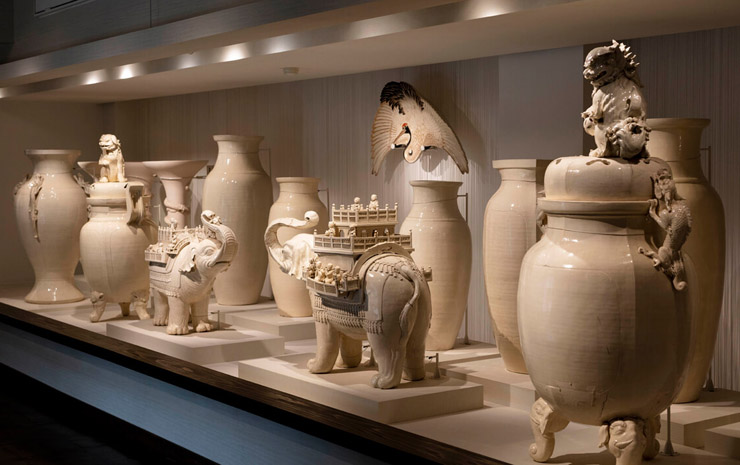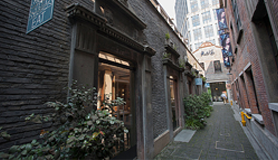
히바카리 (차 그릇 /1대 심당길)
사쓰마야키 / 심수관요
사쓰마야키의 역사는 16세기 말, 임진왜란 당시 사쓰마의 영주였던 시마즈 요시히로가 조선의 도공들을 일본으로 데려가면서 시작되었다. 당시 끌려갔던 심당길, 박평의를 비롯한 80여 명의 도공은 고향을 떠난 슬픔 속에서도 가고시마의 척박한 땅에서 조선의 흙과 가마 기술을 재현해냈다. 이들이 정착한 나에시로가와(현재의 미야마 마을)는 일본 도자기 역사의 새로운 장이 열린 발상지가 되었다.
1867년 파리 만국박람회에 출품된 사쓰마야키의 정교한 아름다움은 유럽인들에게 큰 충격을 주었고, 이후 유럽 전역에 일본 문화에 열광하는 '자포니즘' 열풍을 일으키는 주역이 되었다. 당시 '사쓰마'라는 이름은 그 자체로 동양의 신비롭고 화려한 도자기를 상징하는 고유 명사처럼 통용되기도 했다.
심수관요는 일본 도자기의 대명사인 사쓰마야키를 세계적인 예술 반석 위에 올려놓았다.
심수관가는 1598년 정유재란 때 조선 남원 출신 도공 심당길이 일본 가고시마로 끌려간 이후 그의 후손들이 대대로 이어 온 도예 가문이다.
초기에는 서민들의 삶을 담은 소박한 검은 도자기(구로 사쓰마)를 만들었으나, 점차 상아빛 바탕에 화려한 금채와 정교한 투각 기법을 더한 흰 도자기(시로 사쓰마)를 발전시켰다.
심수관요는 한국과 일본 사이의 아픈 역사를 치유하는 상징적인 존재이기도 하다. 1998년, 임진왜란 400주년을 맞아 14대 심수관은 조상들이 끌려왔던 고향 남원에서 가져간 '고향의 불씨'를 일본으로 가져가 합화(合火)하는 행사를 가졌다.
Satsuma ware (Chin Jukan)
Satsuma ware is a type of Japanese pottery originally from Satsuma Province, southern Kyūshū. Today, it can be divided into two distinct categories: the original plain dark clay early Satsuma made in Satsuma from around 1600, and the elaborately decorated export Satsuma ivory-bodied pieces which began to be produced in the nineteenth century in various Japanese cities. By adapting their gilded polychromatic enamel overglaze designs to appeal to the tastes of western consumers, manufacturers of the latter made Satsuma ware one of the most recognized and profitable export products of the Meiji period.
[Learn more]Source : Wikipedia










 HOME
HOME


 0
0




